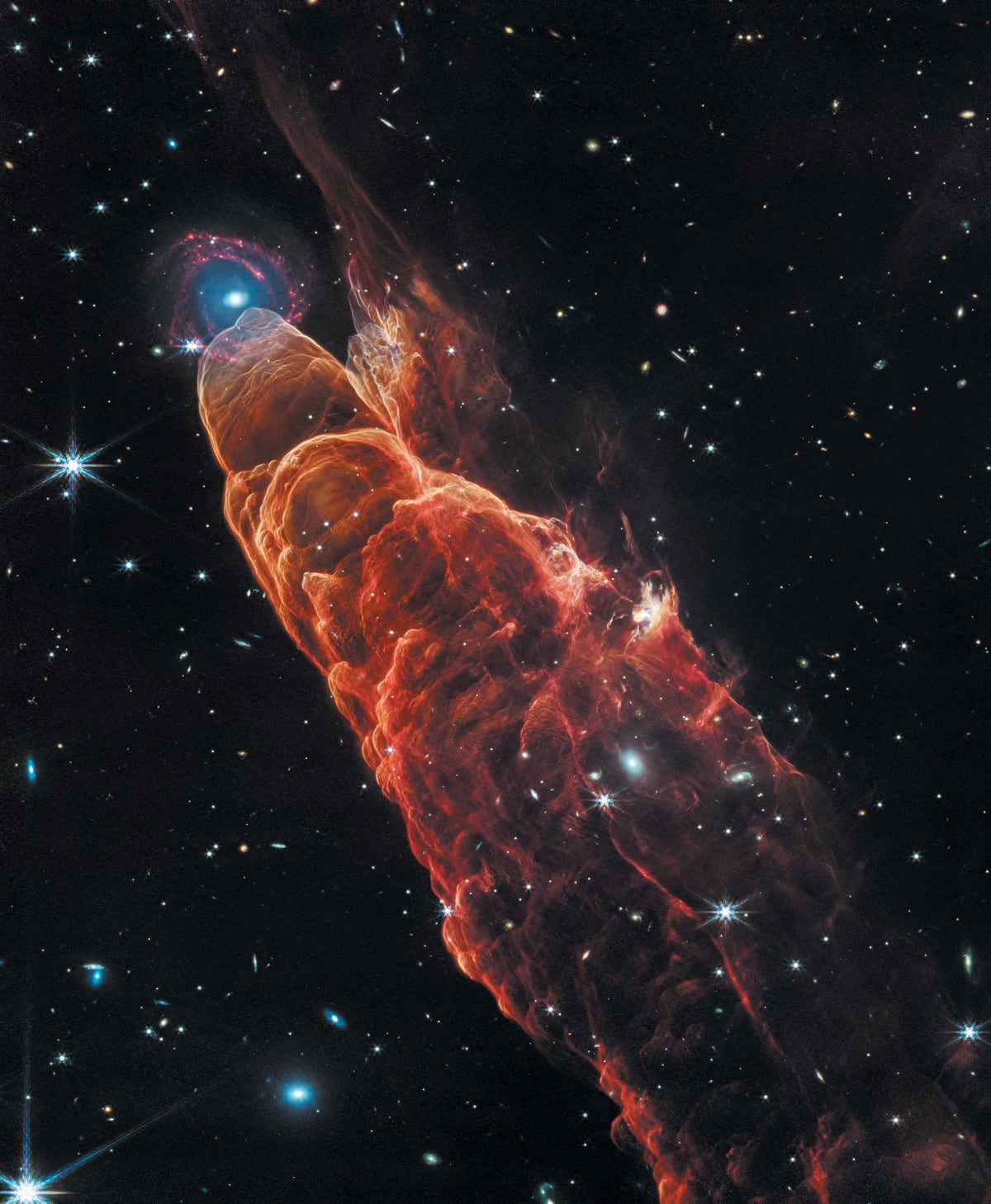Now Reading: JWST Captures Stunning Cosmic Whirlpool from Star Formation
-
01
JWST Captures Stunning Cosmic Whirlpool from Star Formation
JWST Captures Stunning Cosmic Whirlpool from Star Formation

Fast Summary
- The James Webb Space Telescope (JWST) captured a detailed image of Herbig-Haro 49/50,a cosmic phenomenon nicknamed the “cosmic tornado,” located in the chamaeleon I Cloud complex,625 light-years from Earth.
- Herbig-Haro objects are brilliantly lit flares of ionized gas produced by young stars ejecting plasma jets that shape surrounding debris into structures such as HH 49/50.
- Previously observed by NASA’s Spitzer Space Telescope in 2006, HH 49/50 appeared only as a blurry, helical cloud of gas and dust.
- The JWST’s advanced imaging resolved intricate details: debris influenced by plasma jets from a protostar forms HH 49/50’s unique helical shape. A distant spiral galaxy appears behind it due to an optical perspective alignment.
- Astrophysicists noted additional optical effects: smaller dots seen in the image are entire galaxies shining through from vast distances; radiant pointy dots represent individual stars.
- Scientists highlight the image’s meaning for studying phenomena like accretion processes and its transient nature as a single “snapshot” moment in cosmic evolution.
Indian Opinion Analysis
The high-definition imagery captured by JWST underscores humanity’s growing ability to probe celestial events with precision and clarity. For India, which is expanding its space exploration ambitions through projects led by ISRO such as the Aditya-L1 solar mission and Gaganyaan human spaceflight program, these developments serve both as an inspiration and a benchmark.
By enabling global scientists to study phenomena like star formation processes more effectively, missions like JWST reaffirm the potential for international collaboration on space science initiatives. As India continues investing in astronomical observatories like AstroSat or collaborating with global consortia on projects such as LIGO-India (gravitational wave detection), access to advanced data will complement indigenous efforts toward decoding cosmic mysteries.
In essence, large-scale endeavors like this reinforce how becoming active contributors to cutting-edge astronomy can enhance India’s scientific standing while contributing new insights into our shared understanding of the universe.




























